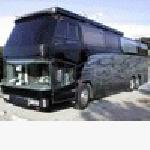| Author | Message | ||
| Robert Munrow (Bob_munrow)
Registered Member Username: Bob_munrow Post Number: 8 Registered: 2-2005 Posted From: 71.171.255.113 Rating: N/A |
I have a 1981 Model 10 Eagle. I am having trouble getting the alternator to charge and also the main blowers to work. I think I have found it to be the 6volt supply to the relays that in turn change it to 12volts to the blowers and 12volts to the regulator. I do have 6 volts at the post on the alternator, but intermittent juice at relays. I have rebuilt alternator (wow, expensive) changed relays , etc. I no longer have the large dc blowers but use that juice as a supply for some other things. It was a great use because it only was able to be used after coach was running a while. I think it is tied to air pressure. Anyway, is it possible to just use a 12volt jumper activated by the ignition switch to the solenoid that powers the regulator and also the two solenoids for the dc blower power. This seems to me that it would be the same results as any other vehicle would use. I figure it was built this way to relieve the drag when starting the coach. Is this what is done if you change over to two separate alternators. I don't see where you would get the six volts with the two alternators. Any ideas and help would be appreciated. I am at a dead end. Please help thanks munent3@yahoo.com | ||
| John & Barb Tesser (Bigrigger)
Registered Member Username: Bigrigger Post Number: 376 Registered: 9-2007 Posted From: 96.42.5.35  Rating: N/A |
Hi Bob, I don't know anything about Eagles, but on our MC5C it actually has a indicator light on the dash that says "not gen" that is lit until the air pressure builds up to about 50 pounds then it goes out and the generator begins charging. Not sure why they did it that way, but i bet yours is the same. As far as the blower motors go. I had mine rebuilt this winter in our 4107 (not cheap either) and replaced the relays and that got them working. The only trouble is they draw app. 55 amps and the replacement Leece Neville alternator the PO put on will not keep up running them along with the lights on, so I can be warm in the dark or cold and see where I am going lol. Good luck to you, John | ||
| Robert Munrow (Bob_munrow)
Registered Member Username: Bob_munrow Post Number: 9 Registered: 2-2005 Posted From: 71.171.255.113 Rating: N/A |
Thanks John, You are right, I think< cause it didn't charge immediately when it was working. I think they did that so there would be less draw on a start and give full amperage to the starter. That's just my anology, but I don't know if i am correct. The same with the DC Blowers. I removed the dc blowers and have some stock small blower motors running off those feeds. They now don't work because of the problem with the 6 volt pulling the relays in, or so I think. Thanks again for your taking the time to give me that information, John. Have a super day. Bob | ||
| Sean Welsh (Sean)
Registered Member Username: Sean Post Number: 1024 Registered: 1-2003 Posted From: 67.142.130.12  Rating: N/A |
I would not just bypass this system. It is there for a reason. Troubleshoot why you are not getting a steady supply of 6v to the relay. The reason it is done this way is to ensure that no extra load is placed on the alternator unless it is running and reliably putting out voltage. The 6 volts comes from the "Relay" terminal on the alternator, which is basically a half-wave tap ahead of the diode bridge. If you are not getting steady voltage here, or enough to hold the relay closed, you may have an alternator problem. The reason why many buses do not connect the alternator until air pressure has built is because some models use belt-driven alternators with pneumatic tensioners. You don't want any load on the alternator until there is enough air pressure to tension the belt. While most two-stroke DD's use gear-driven alternators that do not have this issue, the coach builders nevertheless used the air pressure switch anyway. If you have a gear-driven alternator, you can safely bypass the pressure switch (mine engages immediately), but many folks like to keep it just to give the engine a chance to come up to speed and warm up a bit before dropping the ~10hp alternator load on it. -Sean http://OurOdyssey.BlogSpot.com | ||
| larry currier (Larryc)
Registered Member Username: Larryc Post Number: 314 Registered: 2-2007 Posted From: 64.40.61.231 Rating: N/A |
Hi Robert. Something to think about when removing the DC motors and then using that power for other purposes lies in how the alternator is triggered. You have removed the load and the load should be the trigger for the alternator. The DC motors have a huge load. The system is designed to see that large load, handle it without letting the smoke out and do its job consistantly. So, the issue I am trying to get around to is that the alternator may not be seeing the new smaller load. Actually since the alternator is rebuilt, I have to think the regulator is not talking to it, it should bring the batterys right up to 13 or 14 volts and keep them there. Some buses use a solenoid that stops the alternator from charging at low rpm. Eagle does it that way. If you are using that circuitry you will not have power to the blowers until you are using hi idle rpm or more. |